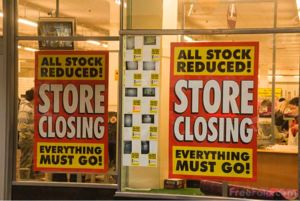
In 2000, e-commerce retail sales were less than $5 billion and department stores sales were nearly $60 billion; a mere 16 years later, e-commerce sales are over $100 billion and department store sales are less than $40 billion!
Excursions to the local shopping mall with friends and family might soon be a thing of the past, along with the drug store soda fountain and the corner candy store. So, have we become a society of agoraphobic (avoidance of open public places) consumers who just want to sit at home and shop on their smart phones, iPads or computers? If this were true, the continual surge of the restaurant industry would not be happening.
In 1955, we spent only 25% of our food budget dining out, but today we spend 48%. Since 2000, the restaurant industry sales have more than doubled. 90% of us say we enjoy going to a restaurant, but 40% state it is an essential part of our lifestyle!
When we have a good experience at a restaurant, we are pleasantly greeted, engaged and pampered. All of our senses are stimulated, from the décor to the aromas escaping from the kitchen to the soft music in the background to the texture of the bread to the delightful food and wine. Who wouldn’t enjoy this type of experience as a part of one’s lifestyle?
Think back to your last experience at a brick-and-mortar retail store. More than likely, you walked in and were either not greeted or greeted in a very rote manner. Then, the clerk may have had the minimal training to complete your transaction, but did not have any role modeling to engage you in meaningful conversation.
No wonder we have rushed to the Internet for our retail needs. We are certainty not engaged or pampered like we are in a good restaurant. Retailers might say, “Well, you are comparing apples to oranges. The retail industry is so much different than restaurant business.”
Hummmm…okay, let’s compare apples to apples…that is, Apple Computer retail stores. Apple opened its first two stores May19, 2001. Today, there are over 300 Apple stores worldwide. The US national average annual mall store sales per square foot is $341; the top 20 retailers average $787; the number two retailer, Tiffany & Co. Jewelry, stores average is $2951; and the number 1 retailer, Apple, is at $5546 per square foot!
How does Apple do it? They have taken the lesson from the great restaurant experience. Your first sensory encounter is the décor. It does not look or feel like the typical retail establishment. Brightly lit, white display counters allow for hands-on demonstrations with all products.
At every Apple store, you are greeted by an enthusiastic employee whose sole purpose is guide you to where you want or need to go and introduce you to the proper sales associate. Your sales associate is thoroughly trained in the culture of the Apple organization as well as in the product specifications. They deploy a systematic engagement process – APPLE: Approach-Probe-Present-Listen-End.
Apple even understands the importance of your tactile sense. They take great pride in the ascetics of the packaging because they want you to have the experience of unveiling your new product. Lastly, there are no cash registers and no boxes of products lying around the store. Sales associates complete each transaction on their iPads, print the receipt and retrieve your product(s) from the back room. If only they served Italian bread with olive oil and wine…then the experience would be complete! But, then, I AM ITALIAN!
Apple has bucked the trend of brick-and-mortar retail in one of the most competitive industries – personal computers. They are a prime example of a company that produces their own “show” while embracing a customer-centric culture.
Key Learning from Apple: Make your customers’ experiences special and they will line up to come to your brick-and-mortar location!





